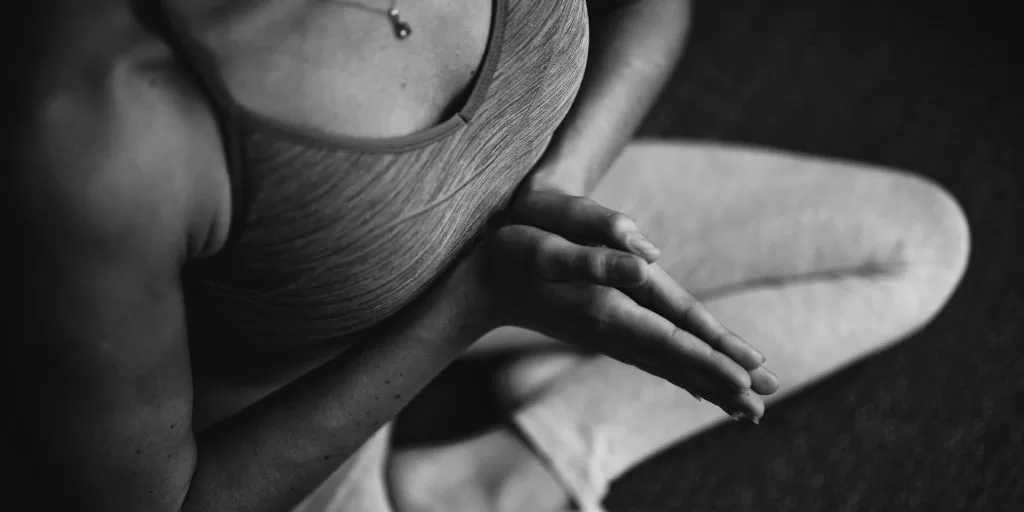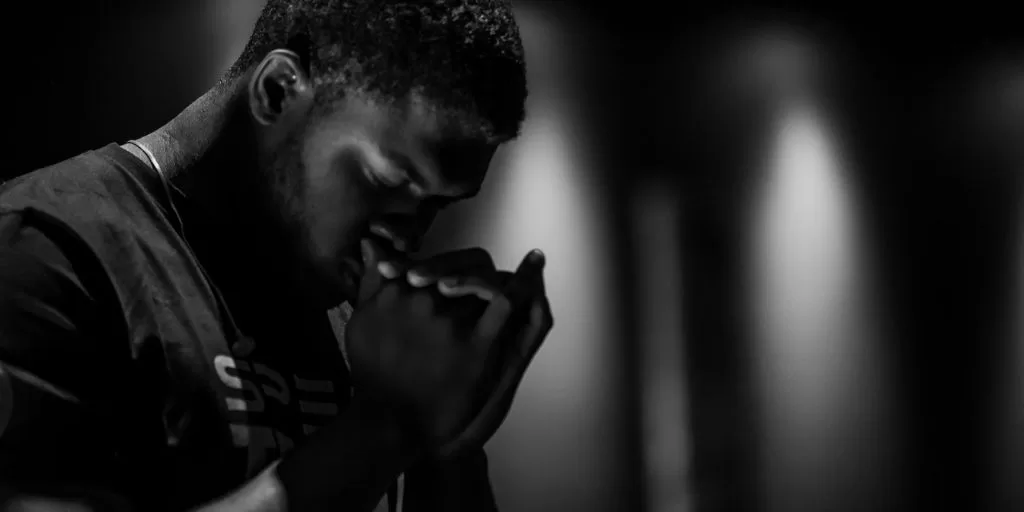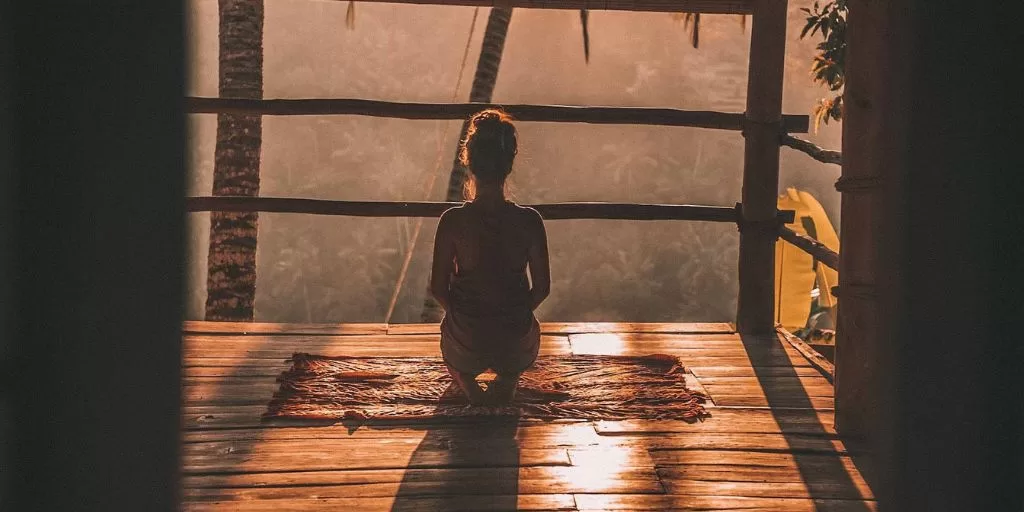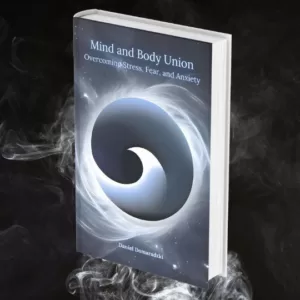The power of prayer and meditation has been acknowledged by many cultures throughout history. Both practices can bring strength, clarity, and focus to our lives. But what are the differences between prayer and meditation? How do these two approaches to inner peace interact with each other? In this guide, we will explore the similarities and differences between meditation and prayer, in order to understand how they affect us on a deeper level.
From a historical perspective, prayer has almost always taken precedence over meditation. From religious ceremonies to private moments of reflection, prayer is an important part of most spiritual paths. Prayer calls upon a higher power for guidance or support while also allowing us to express our gratitude for life’s blessings. It requires faith that something external is listening and responding to your requests. Prayer is a type of meditation.
Meditation, on the other hand, is a practice of working with one’s mind through concentration activities and although most people think of mindfulness or relaxation techniques when they hear the word “meditation”, the truth is that by praying, you are also meditating. What differentiates meditation from prayer is that meditation can be practiced in a variety of ways, while prayer is strictly specified. For example, chakra meditation is a type of meditation but it cannot be classified as a prayer.
By exploring both techniques side by side, we can gain valuable insights into how we use them individually as well as together for greater harmony within ourselves and in our relationships with others.
Table of Contents
- 1 Definition Of Meditation
- 2 Definition Of Prayer
- 3 Origins And History
- 4 Types Of Meditation Practices
- 5 Types Of Prayer
- 6 Differences In Beliefs And Practices
- 7 Impact On Mental Health
- 8 Relationship With Religion
- 9 Benefits To Individuals
- 10 Benefits To Communities
- 11 Frequently Asked Questions
- 11.1 What Is The Best Type Of Meditation Practice For Me?
- 11.2 Is Prayer More Effective Than Meditation?
- 11.3 Are There Any Spiritual Practices That Combine Meditation And Prayer?
- 11.4 Are There Any Negative Effects Of Meditation Or Prayer?
- 11.5 Can Meditation Or Prayer Help Me With Physical Health Issues?
- 12 Conclusion
Definition Of Meditation
Meditation is an ancient practice that has been used since the beginning of time for many purposes. Meditation can involve relaxation techniques, praying, mindfulness, concentration activities such as imagery training or chanting, self-hypnosis, affirmations, and more.
The precise definition of meditation varies depending on who you ask; however, most people would agree that it involves intentionally concentrating on a chosen focal point. This could involve concentrating on your breath or repeating a mantra such as “om” silently in your head. Other forms of meditation may incorporate body movements like Yoga postures or even visualizations of relaxing scenes.
No matter how one defines it, there is no denying that meditation can have many positive mental and physical benefits. Studies show that regular practice can reduce stress levels, improve focus and concentration, decrease anxiety, boost creativity, and increase feelings of happiness – just to name a few. some believe that meditating helps them connect more deeply with their spiritual selves and gain insights into life’s questions.
In terms of religious context, many traditions view meditation as a way to cultivate spiritual growth by connecting with divine energy within oneself. For instance, Hinduism often refers to it as dhyana (or contemplation) which is part of Raja Yoga – the path toward liberation through stillness and self-transcendence – while Buddhism sees it as samadhi (or profound insight). Similarly, in Christianity prayer may be seen as a form of meditative practice meant to deepen the relationship with their god through intentional communication.
Regardless if one views meditation through a spiritual lens or simply enjoys its practical benefits for personal growth purposes – when done correctly – this age-old technique remains an incredibly powerful tool for anyone seeking transformation from within.
Definition Of Prayer

Prayer is a powerful form of communication and connection with the divine. It has been used by many religions across the world for millennia, often as part of their daily spiritual practice. But what exactly does it mean to pray? What are its roots and where does it come from? In this article, we will explore the definition of prayer, including its origins, purpose, and applications in different faiths.
At its core, prayer can be described as an intentional dialogue between an individual and god(s) or another higher power. This could involve speaking aloud or silently repeating words that express one’s feelings, needs, and desires. Some may add physical gestures such as bowing or kneeling to show reverence for a force greater than themselves. Prayer can also take the form of meditative practices like silence or contemplation which allow one to connect more deeply with their inner self while still communicating outwardly with the gods.
In terms of religious context, each tradition has its own unique interpretation of how best to communicate through prayer. For instance, in Christianity prayer involves talking directly to their god while cultivating faithfulness; similarly, Hinduism typically refers to prayer as puja (or ritualistic worship) which is meant to honor the divine essence within all things. Other traditions such as Buddhism see it as mindfulness meditation – focusing on being present without judgment so that wisdom may arise – while Judaism often views it as tefillah (or supplication) which includes reciting specific prayers from scripture as well as singing praises unto Him.
Regardless if someone approaches praying through a devotional lens or simply enjoys its practical benefits for personal growth purposes – when done correctly – this timeless technique remains an incredibly powerful tool for anyone seeking strength from above.
Origins And History
As we now explore the origins and history of both prayer and meditation, it’s fascinating to consider how these two spiritual practices have shaped our lives for millennia. From ancient religions to modern-day spirituality, these two activities continue to be integral parts of many people’s search for greater meaning and purpose. So where exactly did they come from?
Prayer has its roots in many different religious traditions across the world, though its exact origin is unknown. Some scholars suggest that early forms may date back as far as prehistoric times when primitive man began making offerings or sacrifices to unseen gods in an attempt to gain favor or manipulate supernatural forces. As time went on this evolved into more formalized rituals such as chanting mantras, reciting litanies (or lists of names), or engaging in special prayers during specific holy days. Today prayer remains deeply embedded within Christianity, Islam, and Judaism – among other faiths – with adherents commonly using it to express gratitude, ask for guidance, and seek divine intervention.
Meditation too can trace its beginnings back thousands of years ago when Eastern cultures like Hinduism and Buddhism adopted various techniques such as breathing exercises, concentration exercises, and visualization practices which were meant to quieten the mind while connecting one with your innermost self. By cultivating stillness within themselves practitioners were thought to better tap into higher wisdom – leading them closer to achieving enlightenment through transcendence or ego transgression. This form of self-reflection eventually spread westward over the past few decades becoming popular amongst those seeking personal growth who saw it as a way not only to relax but also foster greater self-awareness and acceptance along life’s journey.
No matter if you’re looking for answers from above or just need some clarity amidst chaos, prayer, and meditation are timeless tools available at our disposal anytime we choose to use them. Whether used together or apart each offers unique benefits allowing us all access into realms beyond what we know; providing insight so that we may live fuller lives filled with joy, peace, and hope.
Types Of Meditation Practices
Having explored the origins and history of prayer and meditation, it’s now time to take a closer look at some of the various types of meditation practices currently available. From more traditional methods like mindfulness and transcendental meditation to modern-day approaches such as guided meditations or mantra chanting – there really is something out there for everyone regardless of their spiritual beliefs or lifestyle.
Mindfulness meditation encourages practitioners to observe their thoughts without judgment while paying close attention to physical sensations, emotions, and bodily states. Through this practice, one can gain greater insight into how they react to everyday life’s challenges allowing them to better manage stress while cultivating an inner sense of peace.
Transcendental meditation, on the other hand, utilizes specific practices that lead to transcendence, that is (most often) uniting with a higher power. It allows practitioners to transgress their egos by getting rid of limiting beliefs. This is believed to lead them closer to the divine source of creation. Similar practices are known among Chaos Magick practitioners who transgress their egos by utilizing exercises such as random belief practice, however, their objectives might vary.
Guided meditations are also becoming increasingly popular with those seeking digital solutions because these sessions often include soothing music combined with verbal instruction from experienced teachers – providing step-by-step guidance so that anyone can quickly learn how to relax and enjoy being present in the moment.
Finally, mantra meditation involves focusing on particular phrases or words repeatedly over a period of time in order to achieve mental clarity, cultivate awareness, or even achieve enlightenment depending on individual goals. For example, ancient Hindu texts suggest chanting “om” (or “aum”) during practice as it resonates throughout all levels of existence carrying powerful vibrations capable of transforming negative energies into positive ones.
Similarly, breath meditation (Pranayama) requires intentional breathing exercises used not only for calming but also energizing purposes; enabling participants to tap into hidden sources within themselves thereby releasing untapped potentialities waiting to be discovered.
No matter what type you decide upon, each form offers unique benefits meant to empower individuals through connection with something larger than themselves whether called god, holy spirit, the universe, the source, or simply love – leading us toward greater understanding and fulfillment along our journey here on Earth.
Types Of Prayer

Prayer has been an integral part of human nature since ancient times and as such, there are many different types, techniques, and forms available for anyone wishing to explore its power. Whether you come from a religious or spiritual background or simply want to experience the benefits of connecting with something greater than yourself – all it takes is dedication and practice.
One of the most popular prayer techniques is known as contemplative prayer which involves sitting quietly in stillness while emptying your mind from thoughts so that inner peace can be accessed. This form encourages practitioners to become aware of their feelings without judgment which allows them to reach a deeper understanding of what matters most in life and how they should act accordingly.
Other common prayer rituals include affirmative prayer where positive words (such as “I am at peace”) are repeated over time in order to create powerful vibrations capable of transforming negative energies into positive ones; Healing prayers are often used for physical healing purposes due to illness or injury; and intercessory prayers which involve praying on behalf of another person in need often during difficult times like death, divorce or financial hardship.
The possibilities are endless when it comes to prayer practices because no matter if done alone or within a group setting – this timeless tradition allows us to tap into sources deep inside ourselves enabling us to live more meaningful lives full of love, joy, and abundance beyond anything we could ever imagine.
Differences In Beliefs And Practices

Beliefs and practices of prayer and meditation are often confused, yet they vary in many ways. While both can be used to bring an individual closer to their spirituality or inner peace, there is a significant difference in the beliefs that underpin each practice.
When it comes to prayer belief systems, most religions call for believers to invoke the will of a higher power or divine being through words spoken aloud or silently within one’s mind. The ultimate goal is usually to ask for guidance, protection, healing, forgiveness, and more from this spiritual source. In contrast, meditation focuses on bringing awareness and understanding into oneself with no need for invoking any external force or deity. Instead, practitioners look inside themselves as they focus on releasing negative thought patterns while cultivating positive ones so that ultimately they may reach greater clarity and insight about life’s purpose.
The techniques associated with these two practices also differ substantially. Prayer typically involves speaking out loud either alone or possibly in a group setting depending on religion whilst meditating relies mainly upon quiet stillness with mindfulness-based breathing exercises helping individuals find their center. When done correctly – both forms have been shown to reduce stress levels significantly allowing us to access our own strength and gain better control over our emotions which leads to happier lives overall.
These distinct practices offer different paths for those seeking a deeper connection with their true selves but share common traits such as calming energy and heightened self-awareness which work together toward creating spiritual balance within ourselves regardless of what we choose to believe in.
Impact On Mental Health
It is clear that both prayer and meditation offer profound effects on our mental health. While they may differ in the way they are practiced, both provide calming energy and a heightened sense of self-awareness which can help to reduce stress levels dramatically. But what exactly are their specific impacts?
One of the main benefits associated with meditating is improved focus and concentration. With regular practice, individuals can more easily control their thoughts and feelings thereby reducing anxiety or other negative emotions. It has also been shown to increase creativity and productivity while also helping to lower blood pressure as well as heart rate which leads to an overall healthier lifestyle.
On the other hand, there are many positive mental health outcomes attributed to praying such as increased hope and optimism due to having faith in something greater than oneself. Furthermore, studies have revealed that those who regularly engage in this activity tend to feel more connectedness with others around them due to its communal nature – encouraging a strong support system for one’s well-being. And finally, research suggests that believers experience higher life satisfaction along with lowered levels of depression because of the spiritual guidance offered by religion’s teachings about love, forgiveness, acceptance, and peace.
In short, whether we choose to pray or meditate (or do both!), these practices offer significant rewards when it comes to promoting better physical and emotional wellness within ourselves. Not only will each method bring us closer to our own spirituality but also give us tools needed for managing everyday stresses so that we may find inner balance allowing us to lead happier lives overall.
Relationship With Religion

Prayer and meditation have a long history of being linked to religion. For many, the two activities are intertwined with spiritual practice; each offering a unique way for believers to connect with their faith.
Take Jane Doe (random name) as an example – an Orthodox Christian who has been attending weekly services since she was young. To her, praying is not only about asking her god for help but also expressing gratitude for all that he has given her. She finds comfort in reciting Bible verses out loud during times of distress as it provides peace amidst the chaos. When moments of joy arise, Jane sits quietly in contemplation while reflecting on their god’s divine power which gives her strength to carry on no matter what comes her way.
In contrast, there are those like John Smith (again, random) – a devout Buddhist who uses meditation as his primary form of religious devotion. Each day he spends at least 30 minutes alone in silent prayer or chanting mantras that bring him closer to enlightenment. Through this process, he can feel connected with himself and whatever higher power exists beyond our physical realm. The time spent in reflection helps him to foster inner wisdom so that he may better understand life’s purpose and make more meaningful decisions moving forward.
Overall then, regardless if one practices either activity from a strictly secular perspective or within the context of religious worship, both forms can provide them with powerful tools needed for self-reflection, growth, and healing thereby allowing them to deepen their understanding of themselves, others, and ultimately the world around them.
Benefits To Individuals
One of the major benefits of both prayer and meditation is that they can help individuals achieve a greater sense of mental clarity. By taking time away from our daily routines and worries, we are able to clear our minds and gain perspective on life’s challenges. During this process, it is also possible for us to connect with our hidden potential or recognize solutions which may have been previously overlooked.
Furthermore, prayer and meditation can provide us with an effective way to manage stress levels. Whether through verbalizing requests aloud or sitting in stillness – each activity offers its own unique form of relief so that we can better cope with difficult situations. By engaging in either practice regularly it is possible for one to reduce their overall anxiety while allowing emotions such as fear, sadness, or anger to dissipate naturally over time.
In summary, both activities offer powerful tools needed for profound personal transformation. Through the individuals experience emotional balance, enhanced self-awareness, and even improved physical health when done consistently enough. Regular prayer and/or meditation not only allow us to access inner peace but also provides tangible results worthy of celebration, such as:
1) Increased control over negative thoughts;
2) Heightened ability to make conscious choices;
3) Greater enjoyment of life’s experiences no matter how mundane they seem.
In short, whether practiced separately or together each activity has the power to open up new possibilities for those willing enough to give it a try – making these spiritual practices invaluable resources for any individual desiring more out of life than what he/she currently has now.
Benefits To Communities
The impact of prayer and meditation on communities is just as profound. As individuals become more aware of their own spiritual connection, collective healing can begin to take place within the community at large. Mindfulness becomes easier to access when experienced in harmony with others, allowing us all to share an underlying sense of peace while deepening our relationships with one another.
Prayer and meditation offer many opportunities for collective bonding that may have been previously overlooked or taken for granted. By taking time out together, we can come together in unity to appreciate each other’s presence and express gratitude for what life has blessed us with. In addition, group meditations allow participants to experience moments of deep stillness which are often difficult to find alone – allowing them to go deeper into themselves than ever before.
Moreover, through shared practices such as communal praying or even silent chanting we can join forces in order to bring forth desired changes into our lives and those around us. This kind of spiritual practice allows us to tap into something greater than ourselves: creating a powerful atmosphere that encourages transformation and growth on both personal and collective scales simultaneously.
In this way then prayer and meditation provide effective tools needed for lasting change – whether it be individual or within groups. Through these activities, people not only gain inner clarity but also inspire strong feelings of connectedness among those who participate; encouraging communal well-being no matter what challenges they face along the journey ahead.
Frequently Asked Questions

This section is designed to address common questions and concerns that readers may have about the topics covered in the article. Here, we provide further explanations and clarifications to help readers deepen their understanding of prayer and meditation, and to aid them in choosing the practice that suits them best. Whether you are new to these practices or have been practicing for years, we hope that this section will provide valuable insights and guidance.
What Is The Best Type Of Meditation Practice For Me?
When it comes to meditation practice, there is no one-size-fits-all approach. Different types of meditation have different benefits and techniques that are suited for a variety of people with unique needs and goals. So the question remains: what is the best type of meditation practice for me?
The answer depends on several factors such as your personal interests, lifestyle, available time, and desired outcomes from practicing meditation. If you’re looking to get started in meditation, it can be helpful to explore various styles to determine which one resonates most with you. For example, if you’re searching for more relaxation or stress relief, then mindfulness practices may be beneficial; whereas if you’re interested in self-discovery or spiritual enlightenment, then transcendental meditations could offer greater value.
Once you’ve identified a few feasible options that suit your lifestyle and intentions, take an active role in researching them further by learning about their associated techniques and expectations. Every style of meditation has its own set of rules and regulations – some may require certain postures while others don’t need any particular posture at all! There are also numerous tools like guided meditations, audio recordings, breathing exercises, etc., which can help enhance the overall experience depending on individual preferences.
No matter how much research you do beforehand though – when beginning to meditate – keep an open mind and allow yourself room to experiment so that you can find out what works best for you personally. After all, establishing an effective daily routine will provide ongoing access to powerful insights and lasting transformation over time!
Is Prayer More Effective Than Meditation?
Is prayer more effective than meditation? This is a question that has been asked for centuries, as both spiritual practices have had powerful effects on people throughout history. But which one should you choose if you want to reap the most benefits from your practice?
There are distinct differences between prayer and meditation. Prayer is often used to connect with a higher power, while meditation can be focused on anything (e.g. relaxing the muscles, controlling the breath, heart rate, or body temperature). During prayer, we communicate our desires and intentions to deities, angels, elements, or a higher being in order to receive guidance or make requests of them. Meditation, however, involves focusing our attention on the chosen focal point which, realistically, can be pretty much anything.
When it comes to finding out what type of spiritual practice will be best for you, there’s no single answer; it depends entirely on individual needs and preferences. Some may find that combining the two activities works well for them since they offer different types of relaxation techniques – praying can help focus the mind and open up communication pathways with a higher power, while meditation allows us to drop into deeper states of consciousness where healing can occur.
For example, modern-day professional athletes use meditation and mental conditioning techniques to improve their sports performance. Now, I think we can both agree that praying to a “sports god” for more strength or speed is (nowadays) rather unheard of, but it was a common practice thousands of years ago. However, it’s important to note that both practices can result in achieving the desired effect and boost one’s self-confidence, increase their pain threshold, endurance, mental toughness, and more. That said, it is ultimately only a matter of preference.
No matter what method you choose, exploring both prayer and meditation can bring powerful benefits such as inner peace, emotional balance, and physical health improvements. Whether you decide to stick with one activity or combine them both together, getting started with either can open new doors to greater self-awareness – something that everyone could benefit from!
Are There Any Spiritual Practices That Combine Meditation And Prayer?
Are there any spiritual practices that combine meditation and prayer? This is a valid question, as the combination of these two activities could be seen to produce powerful results. It can certainly seem like an unusual pairing – is it even possible to combine the two? The answer is yes! In fact, many people have found combining meditation and prayer to be incredibly beneficial for their spirituality.
Meditation-prayer combinations take many different forms, depending on personal preferences and beliefs. For some, this could mean praying before or after meditating, while others might choose to incorporate both activities into one session. A good example of this type of spiritual practice would be a mindful prayer: here, instead of reciting traditional prayers from memory, individuals focus on the chosen deity and direct their attention to becoming more present and self-aware in each moment by taking slow breaths and concentrating on the sensations they experience during the process. This practice can be classified as a form of invocation within esotericism/occultism.
No matter what form your combination takes, it’s important to remember that you don’t need to make it overly complicated; just find something that works for you. Also, don’t forget that meditation and prayer are not mutually exclusive; sometimes taking breaks from either activity will give your mind a chance to reset itself and come back feeling refreshed.
Incorporating both activities into your daily routine can help bring balance to your life as well as increase your sense of connection with yourself and those around you. Combining meditation and prayer provides a unique opportunity for spiritual growth; allowing yourself time for reflection without becoming overburdened with expectations or obligations associated with particular religious beliefs.
TIP: Start small when combining meditation and prayer together – try 10-20 minutes per day first and if that feels comfortable, slowly build up until you develop a successful routine.
Are There Any Negative Effects Of Meditation Or Prayer?
When it comes to spiritual practices such as meditation and prayer, many people consider them harmless. However, there are potential risks involved with undertaking either or both of these activities. This section will discuss the possible negative effects of engaging in meditation and/or prayer.
Meditation is often considered a calming activity that can help reduce stress and improve the clarity of thought; however, this isn’t always the case. There have been reports of some individuals experiencing adverse side effects from meditating including headaches, dizziness, and confusion. Additionally, there may be an increased risk of anxiety-related issues when practicing certain forms of meditation.
Similarly, praying has also been associated with certain drawbacks. For those who practice more extreme forms of prayer such as chanting or speaking in tongues – known as glossolalia – there’s a possibility that they could experience psychological distress due to the intensity of the ritualistic elements inherent in their prayers. In addition, too much time spent on religious worship may cause physical fatigue if not properly monitored and managed by participants.
Those who wish to undertake any form of spiritual practice should be aware that although most people don’t encounter any major problems while doing so, it doesn’t guarantee immunity from harm either physically or emotionally. Therefore, anyone attempting to engage in either type of activity should do so cautiously with proper guidance from experienced professionals if necessary. It’s important to take into account your own individual needs when deciding how much time you want to spend on each activity and finding ways to ensure it fits within a healthy lifestyle overall.
Can Meditation Or Prayer Help Me With Physical Health Issues?
Surprisingly, meditation and prayer can have a positive effect on physical health. According to the National Center for Complementary and Integrative Health, studies suggest that spiritual practices like meditation and prayer may help with conditions such as chronic pain syndrome.
Meditation is one of the most popular forms of spiritual practice today. People benefit from it by improving their mental clarity, decreasing stress levels, and increasing their concentration. Furthermore, research suggests that it may also be beneficial in reducing inflammation which can lead to improved overall physical health.
Prayer has been practiced since ancient times and is another form of spiritual practice. The act of praying brings peace and comfort while helping individuals connect with a higher power. Additionally, it has been found to reduce symptoms associated with anxiety and depression, both of which are known to contribute to poor physical health if left untreated. It appears that regular participation in these activities helps ward off negative effects caused by emotional distress.
While there are potential benefits to engaging in activities such as meditation or prayer, they should not be used exclusively as a substitute for traditional medical treatments when dealing with physical ailments. Incorporating them into an existing healthcare regimen can however provide additional support in terms of managing long-term issues related to physical well-being. Ultimately, providing yourself with holistic care through various spiritual practices is essential for achieving optimal health results over time.
Conclusion

The debate between meditation and prayer is a complex one, with many nuances to consider. When it comes down to it, the type of spiritual practice that works for you will depend on your individual beliefs and preferences. Both meditation and prayer have their own unique benefits and drawbacks; however, when practiced properly, both can be powerful tools for improving mental health, physical well-being, and overall life satisfaction.
So whether you prefer meditating quietly in solitude or praying amongst a group of believers, there’s no denying that these two practices share many similarities while still offering distinct advantages. Like two sides of a coin, they are complementary rather than mutually exclusive: each has something special to offer us if we take the time to understand them deeply.
In conclusion, when considering which spiritual path best suits your needs – meditation or prayer – it’s important to remember that neither is better than the other; rather they are two sides of the same coin working together harmoniously to bring balance into our lives. With this understanding at hand, may you find peace within yourself as you explore whichever practice resonates most strongly with your innermost being.
P.S. If you’d like to learn more about various meditative practices and how can they be implemented for healing purposes, I recommend taking a look at my advanced meditation book that extensively covers the topic of esoteric practice.





